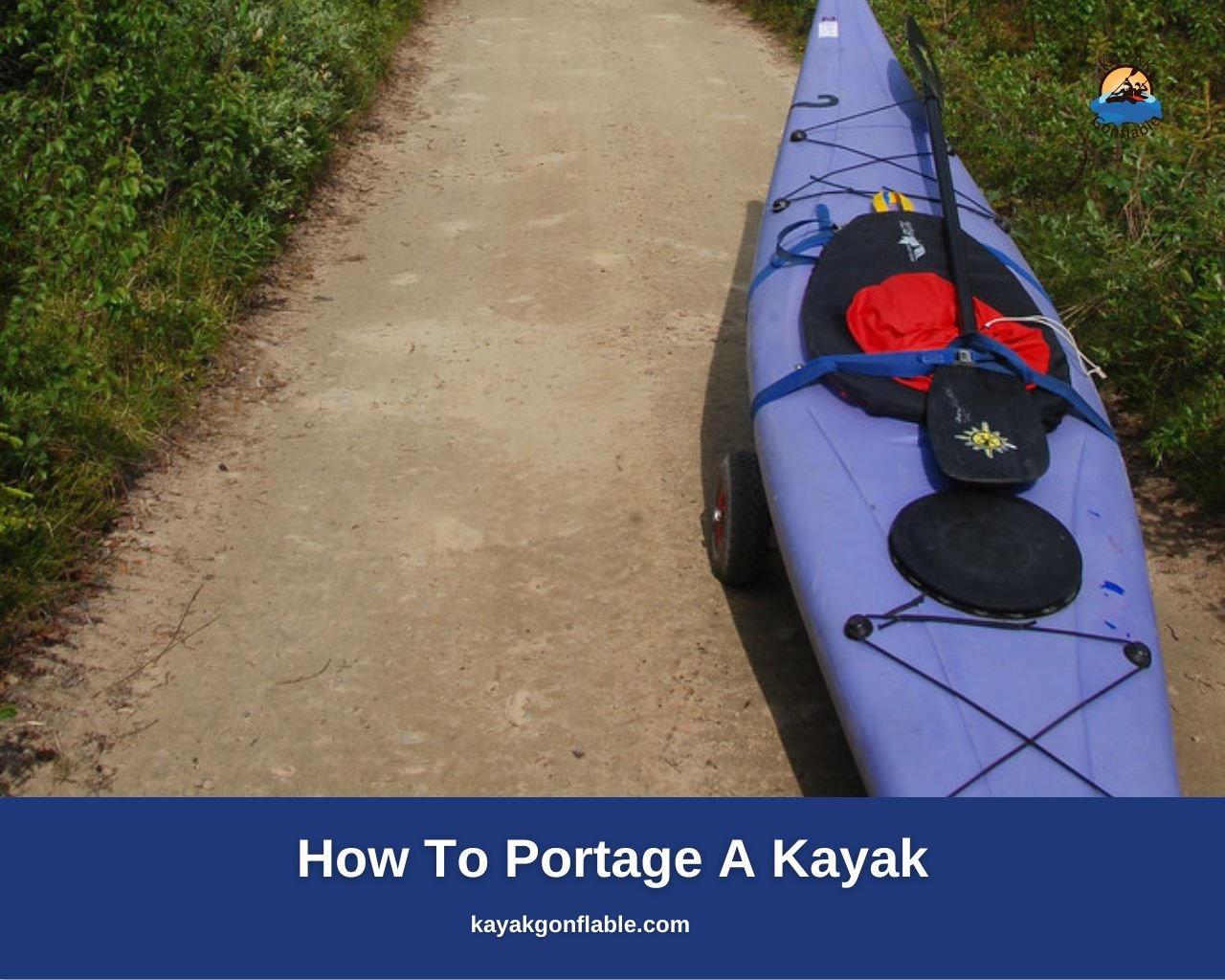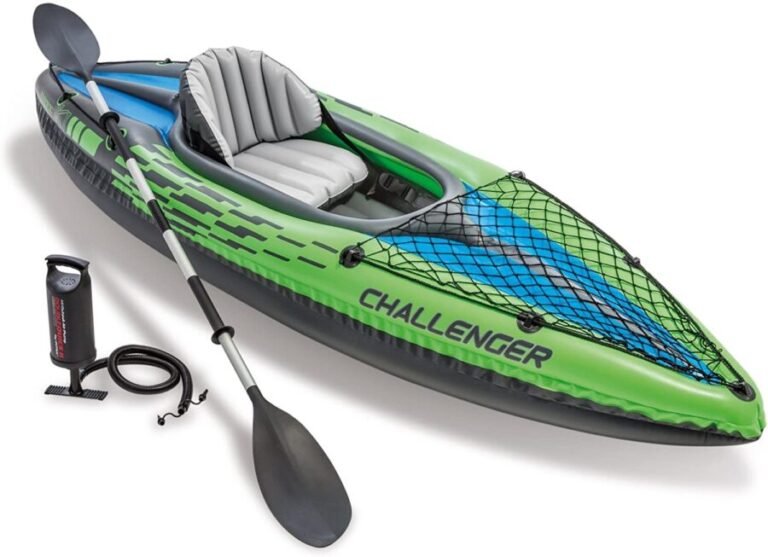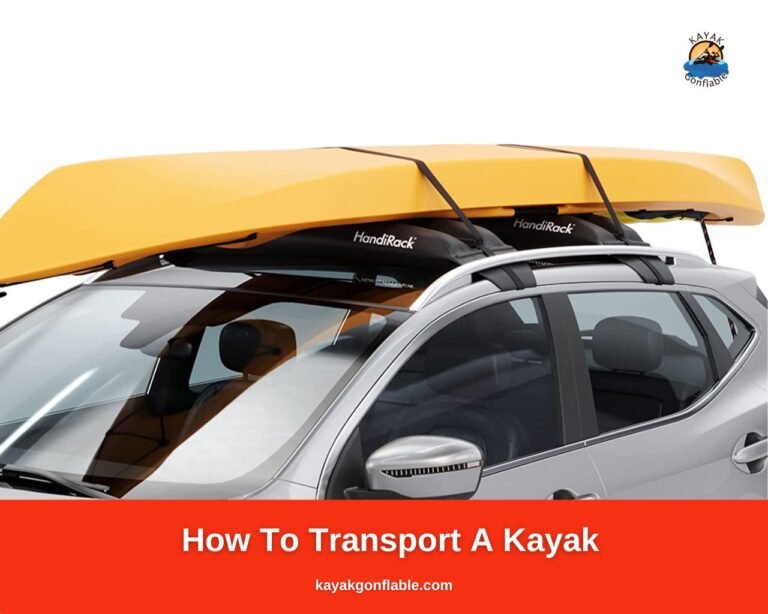Come fare il portage di un kayak

Il kayak è innegabilmente divertente e un ottimo modo per allenarsi e vedere splendidi paesaggi. Tuttavia, i canoisti a volte devono trasportare le loro imbarcazioni da un punto all'altro durante il viaggio e trasportare un kayak può essere impegnativo poiché i kayak sono generalmente pesanti e difficili da trasportare.
Questo articolo ti aiuta ad avvicinarti al trasporto del tuo kayak da un'altra angolazione per rendere il tuo viaggio più piacevole.
Cos'è il portaging?
Il trasporto è l'atto di trasportare merci o persone via terra tra due punti. Può essere fatto su un fiume o un lago, così come sulla terraferma.
Lo scopo del portaging è ridurre il numero di viaggi necessari per spostarsi da un luogo all'altro. Esistono diversi tipi di portage, a seconda del terreno.
Il trasporto è una tecnica utilizzata da canoisti e kayakisti per trasportare le loro imbarcazioni attraverso fiumi e laghi. È un modo per aggirare sezioni d'acqua difficili ed è anche un ottimo modo per esplorare nuovi territori.
I canoisti spesso si trasportano attorno a scogliere, rapide e altri ostacoli mentre trasportano la loro moto d'acqua sulla schiena.
Quando trasportare un kayak?
Portare un kayak è un modo popolare per navigare in corsi d'acqua difficili. Ci sono molti fattori da considerare quando si decide quando trasportare un kayak:
- La lunghezza del portage (la distanza da percorrere ti consente di sapere se ne vale la pena)
- Le condizioni dell'acqua (acqua agitata o rapide sono solitamente segnali per il trasporto della moto d'acqua)
- Il tipo di kayak (questo riguarda il peso del kayak e il modo migliore per trasportare l'imbarcazione)
- La tua esperienza (quanto spesso hai trasportato una nave in precedenza ti consente di sapere se questa volta sei all'altezza del compito).
Dovresti sempre consultare le mappe locali e i materiali di riferimento prima di intraprendere un trasporto.
Portare un kayak può essere un ottimo modo per risparmiare energia e tempo quando si viaggia attraverso corsi d'acqua difficili, ma i terreni difficili non sono l'unico momento in cui è necessario trasportare la propria moto d'acqua. Alcuni casi in cui è necessario il portaging includono:
- Spostare il kayak dal veicolo (auto, camion, ecc.) all'acqua o dall'acqua al veicolo.
- Se l'acqua è troppo profonda o mossa velocemente perché il tuo kayak possa navigare facilmente.
- Se devi superare un ostacolo difficile, come un ampio fiume o il letto di un ruscello roccioso, è meglio attraversarlo sulla terraferma.
- Se l'acqua è troppo rocciosa o poco profonda per il tuo kayak.
- Se stai esplorando un'area remota.
- Se sei in un'avventura in cui navighi tra diversi corpi idrici che hanno percorsi di trasporto tra di loro.
Suggerimenti per trasportare un kayak
Prima di andare in kayak e dover trasportare la tua imbarcazione durante un viaggio, dovresti tenere a mente questi suggerimenti.
1. Pianifica il tuo percorso in anticipo
Prima di intraprendere qualsiasi viaggio, informarsi sui percorsi da intraprendere è fondamentale soprattutto se si trasportano carichi.
Dovresti esplorare il percorso previsto fisicamente o digitalmente prima di intraprendere il viaggio. Lo scouting digitale prevede l'uso di mappe e tecnologie come i sistemi GPS per ottenere tutte le informazioni rilevanti sul percorso di trasporto.
Lo scouting fisico, sebbene considerevolmente più difficile e faticoso rispetto alla versione digitale, ti offre una prospettiva migliore non solo sul percorso di trasporto ma anche sul punto di lancio del tuo kayak una volta a destinazione.
Lo scouting fisico senza il kayak ti dà anche un'idea di quanto tempo impiegheresti in media per spostare il kayak da un punto all'altro e quante pause di riposo dovresti fare.
2. Rimuovere l'acqua dal kayak
Il trasporto dei kayak è impegnativo perché i kayak sono intrinsecamente pesanti, quindi dovresti sempre scaricare l'acqua che potrebbe essere entrata nella tua imbarcazione prima di trasportare il kayak poiché qualsiasi acqua di questo tipo renderà il compito più difficile per te.
I kayak sit-on-top possono essere facilmente drenati dell'acqua attraverso i fori degli ombrinali, mentre i kayak sit-inside possono essere drenati in modo simile tirando i tappi sui fori di scarico.
3. Rimuovere l'attrezzatura non necessaria
Proprio come l'acqua che scorre nel tuo kayak renderebbe il viaggio difficile e scomodo, lasciare l'attrezzatura nel kayak ne aumenta il peso e rende difficile il trasporto.
Rimuovi sempre tutta l'attrezzatura non necessaria e mettila in uno zaino o in una borsa impermeabile per ridurre il carico nel kayak e facilitare il trasporto.
Elimina inoltre il rischio che alcune attrezzature cadano dall'imbarcazione durante lo spostamento da un luogo all'altro.
4. Pratica
Se vuoi migliorare nel trasporto dei kayak, un buon modo per farlo è esercitarsi.
Il detto "La pratica rende perfetti" suona vero qui perché poiché i kayak sono piuttosto pesanti, esercitarsi costantemente trasportare il tuo kayak a casa ti aiuterà a sviluppare la forza e la resistenza necessarie per portare a termine facilmente il compito quando devi trasportare il tuo kayak.
Puoi esercitarti a trasportare il kayak nel tuo giardino o nel tuo quartiere. Esercitati a sollevare la nave sopra la testa per avere un'idea del suo peso e del tuo equilibrio.
Muoviti con il kayak per avere un'idea di come trasportarlo, tenendo presente che molto probabilmente il trasporto durante un viaggio sarà più difficile. Se ti eserciti abbastanza, noterai che il trasporto del tuo kayak sarà abbastanza semplice quando dovrai farlo su un percorso di trasporto.
5. Sii consapevole di ciò che ti circonda.
Un altro consiglio importante è essere sempre consapevoli di ciò che ci circonda.
È fondamentale tenere d'occhio l'ambiente in modo da poter notare facilmente ed evitare tutti i possibili pericoli durante il trasporto del kayak, soprattutto quando il terreno non è favorevole e non si ha familiarità con la zona.
Sii educato con gli altri kayakisti se li vedi lungo il percorso mantenendo un atteggiamento positivo e dovresti stare bene.
6. Preparati leggero
Se intendi intraprendere un'avventura in kayak in cui dovrai trasportare la nave, considera di portare con te solo l'attrezzatura essenziale durante il viaggio.
Ricorda che i kayak sono pesanti di per sé e più attrezzatura hai con te, più lungo sarà il tempo di trasporto e potresti dover fare più viaggi nella peggiore delle ipotesi.
Questo è pericoloso perché non tutti sulla strada potrebbero essere gentili e alcuni potrebbero servirsi della tua attrezzatura.
Per tenere meglio d'occhio i propri effetti personali, è consigliabile mettere in valigia solo le cose necessarie o che si è sicuri di poter trasportare insieme al kayak in un unico viaggio. Fare le valigie leggere ti aiuta anche a risparmiare tempo.
Come trasportare il tuo kayak
Usa un carrello per kayak
Il kayak non è solo una questione di pagaiare. A volte è necessario trasportare il kayak per una breve distanza e ciò può essere impegnativo poiché i kayak sono piuttosto pesanti e scomodi da trasportare.
UN carrello per kayak è un modo semplice per trasportare il tuo kayak. I carrelli sono progettati specificamente per il trasporto di kayak e rendono molto più semplice il trasporto dell'imbarcazione. Puoi comprare un kayak carrello o costruiscine uno tu stesso se lo desideri.
Ci sono diversi tipi di kayak carrelli sul mercato per soddisfare i diversi tipi di kayak disponibili. Il carrello per kayak più comune è del tipo pieghevole.
Questo carrello ha due ruote e si ripiega per riporlo facilmente in modo da poter continuare il viaggio dopo aver trasportato il kayak. Ecco alcuni motivi per cui utilizzare un carrello per kayak è un'idea intelligente.
- Può aiutarti a spostare facilmente il tuo kayak da un punto all'altro con il minimo stress.
- Un carrello per kayak ti farà risparmiare tempo e fatica durante il tuo viaggio.
- I carrelli per kayak possono essere utilizzati su tutti i tipi di terreno durante il trasporto della nave, quindi sono sempre utili.
- I carrelli per kayak sono particolarmente utili per chi ha problemi di salute alla schiena, alle spalle, alle ginocchia o ad altri disturbi che renderanno pericoloso per loro il trasporto di un kayak con forza bruta.
La prossima volta che il tuo viaggio in kayak include un percorso di trasporto, valuta la possibilità di procurarti un carrello per kayak per rendere il viaggio più facile.
Usa le maniglie per il trasporto del tuo kayak
Molti kayak sono dotati di maniglie per il trasporto a prua e a poppa dell'imbarcazione, alcuni addirittura hanno maniglie sul lato del kayak per facilitare il trasporto.
Le maniglie forniscono un posto comodo a cui aggrapparsi il canoista mentre sposta il kayak e consente a due rematori di spostare facilmente il kayak con un canoista che si tiene sulla maniglia di prua mentre l'altro si tiene sulla maniglia di poppa.
Anche le maniglie per il trasporto del kayak possono essere utili se si utilizza un carrello per trasportare il kayak. Le maniglie ti aiuteranno a caricare facilmente la nave sul carrello del kayak.
Dovresti caricare il kayak con la poppa sul carrello e quindi utilizzare le maniglie di prua per tirare e governare il kayak e il carrello. Questa combinazione rappresenta un modo semplice per trasportare il tuo kayak.
Le maniglie per il trasporto semplificano davvero la vita poiché possono essere utilizzate per trasportare due kayak contemporaneamente. Forse siete fuori con un amico o un parente, ognuno di voi con il suo kayak e dovete trasportarlo a distanza.
Tutto quello che devi fare è designare un canoista per maneggiare le maniglie di prua dei kayak mentre l'altro canoista si aggrappa alle maniglie di poppa dei kayak e poi si muove. Camminando a un ritmo adatto a entrambi potrete risparmiare tempo e trasportare facilmente entrambi i kayak.
Dovresti, tuttavia, tenere presente che, sebbene questo metodo sia efficace e faccia risparmiare tempo, trasportare due kayak in questo modo può essere faticoso per il tuo corpo, in particolare per la schiena e le spalle.
Se non hai fretta o desideri ridurre lo sforzo del tuo corpo, puoi trasportare ciascun kayak separatamente con una persona che tiene le maniglie su ciascuna estremità dell'imbarcazione. Ricordate però che, sebbene l'alternativa sia meno faticosa per il corpo, richiede anche più tempo.
Usa la forza bruta
L'ultimo modo per trasportare il tuo kayak è attraverso l'uso della forza bruta. Come suggerisce il nome, devi essere sicuro di avere la forza necessaria per percorrere questa strada, quindi questo metodo non è per tutti.
Qui porti semplicemente il tuo kayak in testa e inizi il viaggio verso la tua destinazione. Poiché i kayak sono intrinsecamente pesanti, questo metodo ti stanca facilmente e può mettere a dura prova il tuo corpo, in particolare la schiena e le spalle.
Il vantaggio di usare la forza bruta è che non hai bisogno di attrezzature aggiuntive (come un carrello) per spostare il tuo kayak da un posto all'altro.
Prima di utilizzare questo metodo di trasporto del kayak, è consigliabile aver già praticato questa forma di trasporto in situazioni controllate per conoscere il proprio livello di resistenza.
Inoltre, il metodo non è adatto a terreni lunghi o accidentati, quindi tienilo a mente prima di scegliere di trasportare la tua nave con la forza bruta. Se devi usare la forza bruta, fallo con cautela e assicurati di fare tutte le fermate necessarie per trasportare in sicurezza il kayak.
Il kayak è un ottimo modo per uscire all'aria aperta e godersi la natura. Può anche essere un ottimo allenamento. Tuttavia, se non hai familiarità con questo sport, è importante prendersi del tempo per apprenderne le basi prima di entrare in acqua.
Ciò include imparare a trasportare un kayak. Esplorare il percorso, praticare il portaging ed essere attenti alla sicurezza dovrebbero essere sempre nella mente dei kayakisti prima di intraprendere un viaggio che prevede il portaging.
Per trasportare un kayak, dovrai:
- Rimuovere tutta l'attrezzatura dal kayak.
- Scaricare tutta l'acqua dal kayak.
- Solleva il kayak e portalo a destinazione. Ciò può essere ottenuto con un carrello, con la forza bruta o trasportando il kayak per le maniglie con un partner.
- Essere attenti alla sicurezza sul sentiero per arrivarci in sicurezza.
- Una volta a destinazione, sostituisci tutta l'attrezzatura e continua il viaggio.
Ricorda di praticare sempre tecniche di trasporto sicure utilizzando una cinghia robusta o una maniglia per il trasporto e mantenendo l'equilibrio. Buon divertimento sull'acqua!






